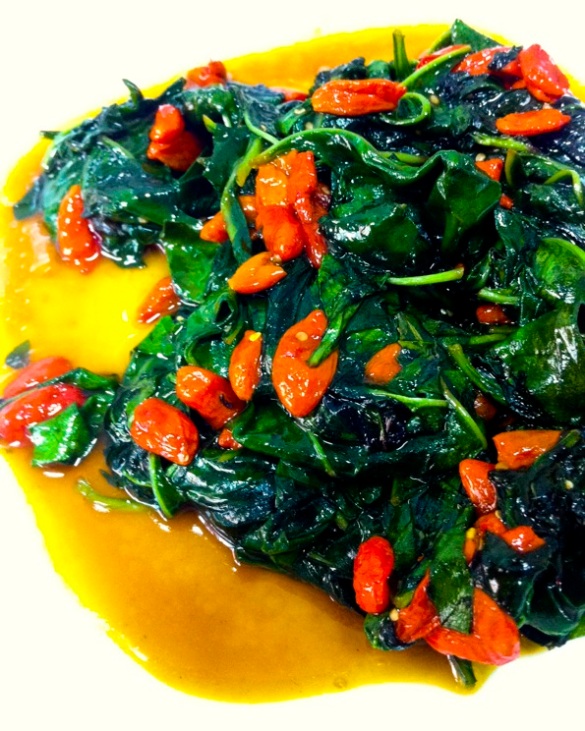That’s quite a mouthful.
As you may or may not already know, I’m taking care of a cancer patient at home. We’re going through the chemotherapy phase now, and this week was full of complications but I think we’re going to pull through.
I do the cooking at home most of the time, so these days my efforts are largely focused on preparing nutritious meals that fit her chemo schedule. I’m learning as we go along, really. My mom brought home a couple of books from Taiwan on preparing vegetarian meals for cancer patients, so I’ve been referring to them for Chinese meals and then applying the theories to when I prepare, say, Japanese or Italian food.
I think we’ve heard enough about the benefits of wolfberries (or gou ji, as they are better known in Singapore), but not enough has been said about wolfberry leaves. They’re actually really good stir-fried, and are apparently an excellent source of Vitamin E. The only problem is that wolfberry leaves are notorious for being difficult to handle because they grow on thorny stems — ah, the woes of Chinese mothers!
My grandmother did the dirty work this time, and then sent my grandfather to our place with a huge bag of wolfberry leaves, which we had for lunch today.
We used:
- A lot of wolfberry leaves
- A bunch of dried wolfberries
- Some vegetarian “oyster” sauce — mushroom stock, really — OR light soy sauce.
OK, obviously I don’t measure things.
1. Soak the wolfberries in a bowl of water.
3. Heat the pan up and throw in a bit of olive oil. Any oil really; it’s just that there’s only olive oil at home.
4. Throw in the leaves. They start to shrink really quickly. Stir, stir, fry, fry.
5. When they look about half-done, throw in the wolfberries (drained beforehand, please). Stir, stir, fry, fry.
6. Add the vegetarian oyster sauce or whatever seasoning you have. Stir, stir, fry, fry.
7. Serve with rice or rice porridge.
I know there are some concerns about cooking vegetables for too long, but the Chinese books suggest that cancer patients may not be strong enough for raw food, so I’d err on the side of overcooking if I had to.
Also, I like the mushroom sauce because it gives the dish quite a bit of flavour. My food is usually less flavoured but chemotherapy affects the taste buds, so I’m trying to make my dishes as flavourful as possible.
That’s all for now. I think I’m going to start posting recipes here and there for anyone who’s interested, because I know we can get nervous about preparing food for cancer patients, especially if they have further dietary requirements. As a disclaimer though (and because this is what I’m trained to do: claim and disclaim), these recipes aren’t going to be sufficient and you should do your own research and make an independent judgment as to whether they are suitable for whoever is in your care.

0 comments:
Post a Comment